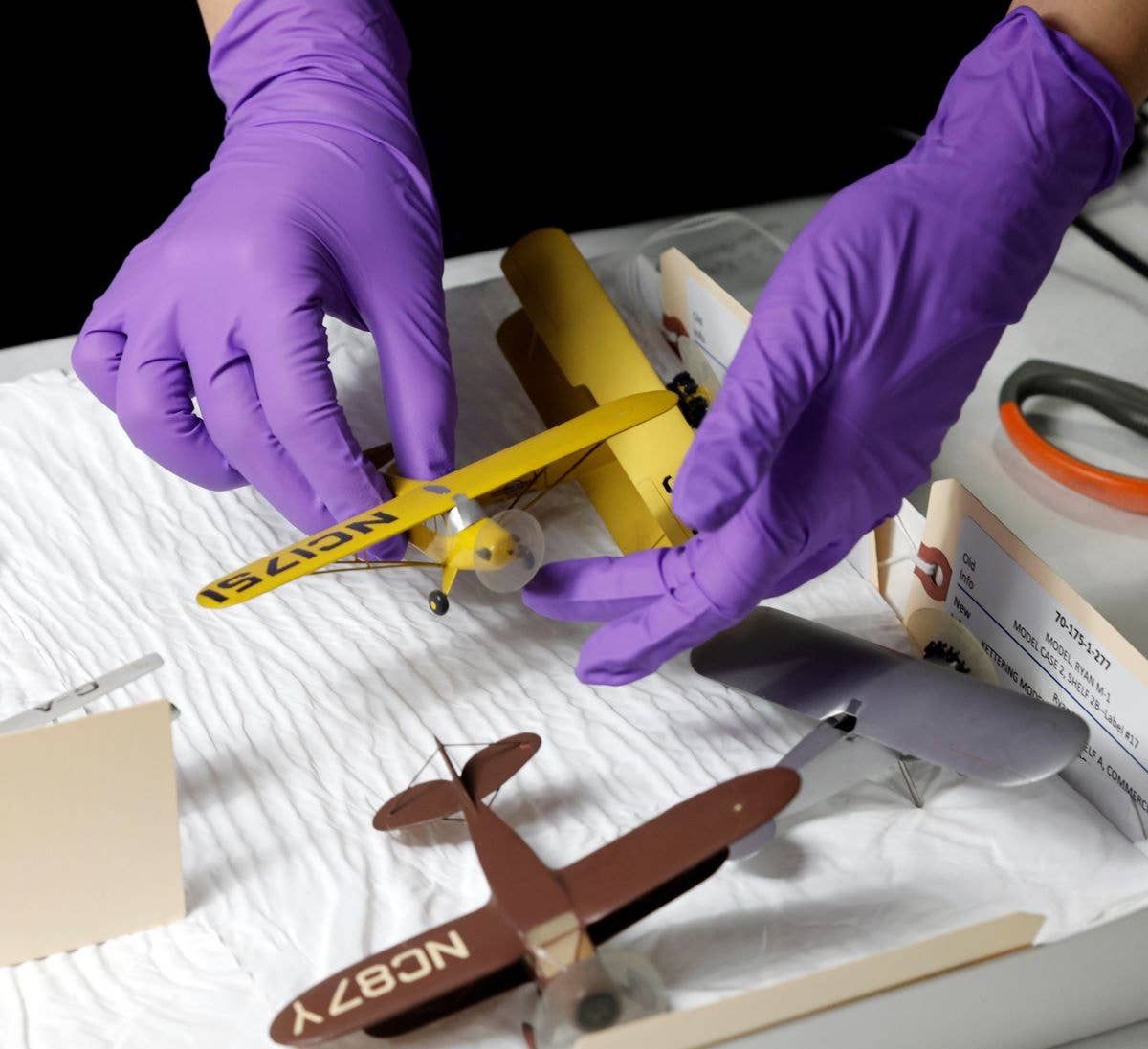Kettering Model Aircraft Collection Undergoes Conservation
Philanthropist’s hand-built replicas are being restored and readied for a new display case at the National Museum of the U.S. Air Force.

Some of the model aircraft in the Kettering collection date back to the 1930s. [Courtesy: National Museum of the U.S. Air Force]
Many of us begin our aviation careers by building model aircraft— and some never stop.
That would have described the late Eugene Kettering, an engineer, philanthropist, and first chairman of the Air Force Museum Foundation. Kettering went to work at General Motors in 1930 and helped in the development of the modern diesel locomotive. He also built aircraft models on the side, and when he retired in 1960, he and his wife, Virginia, looked for philanthropic endeavors for that outlet—one was the creation of the Air Force Museum.
In 1962 he arranged for a long-term loan of many of his creations to the newly launched Air Force Museum. It evolved into the National Museum of the U.S. Air Force, which opened in 1971 in Dayton, Ohio.
About the Models
Kettering’s models, some dating back to the 1930s, spent several decades on public display, most recently in large cases in the hallway connecting the second and third buildings across from the museum’s Berlin Airlift exhibit. "The models on display give visitors a sense of the technological growth of aviation at a glance," museum officials said.
The Eugene W. Kettering Model Aircraft Collection consists of 624 models, ranging in size from 4 inches to nearly 3 feet in length and including both military and civilian aircraft from 10 countries.
Museum officials realized they could not undertake treatment of the models in-house due to the size of the collection and sought the assistance of the Intermuseum Conservation Association (ICA) in Cleveland.
- READ MORE: The Art of Die-Cast Airplane Collecting
According to museum objects conservator Jennifer Myers, the models are mostly made of wood since they were built at a time when plastic, the modern material, wasn't available.
“A number of these models are extremely delicate,” said Myers, noting that it’s not unusual to see the adhesives used on these models breaking down over time, resulting in propellers starting to fall off and struts or wheels breaking off, or the detail pieces, such as the wire struts, starting to corrode.
Additionally, some of the models were built with materials considered hazardous today, such as lead paint.
Myers utilized an X-ray fluorescence scanner to read the lead levels. Radiation safety officer Jeremy Gallogly scanned all 624 models and determined they contained no radioactive materials.
- READ MORE: The Timeless Joy of Scale Model Building
“The good thing about going with [an organization] like [ICA] is that they can handle the volume of artifacts in this collection," said Myers.
The models are one-of-a-kind as most were built from scratch at a time when kits as we know them were few and far between. In 2022 the museum’s Collection Management Division recommended that the models be removed for conservation, as time and light were taking a toll. The models, some small enough to fit in the palm of your hand, have spent several months undergoing cleaning and repair and are soon going to be reinstalled in the museum display cases.
While the models are being cared for, a new display case is being built in Kettering Hall to house the collection. The new case includes humidity-control capabilities and lighting for better preservation.
Museum officials expect the Kettering model collection to be fully installed in the new case by summer 2025. More information on the project can be found here.

Sign-up for newsletters & special offers!
Get the latest FLYING stories & special offers delivered directly to your inbox






